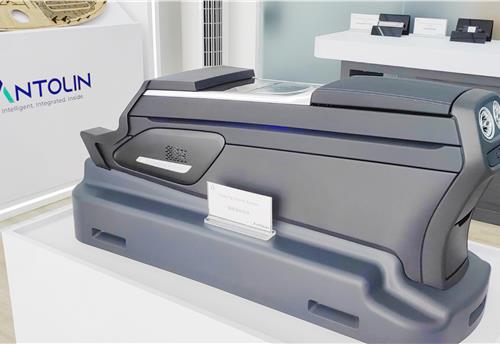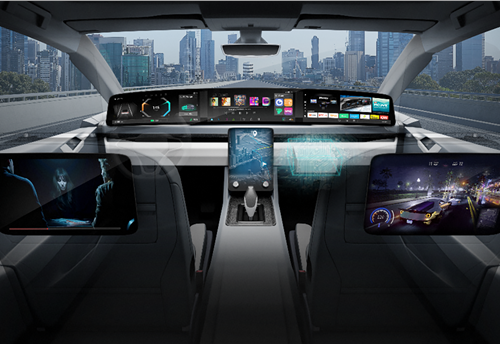Lightweight BEHICLE EV targets 5-star Euro NCAP rating
ZF’s passive safety systems are designed to make BEHICLE (Best-in-class veHICLE), an electric quadricycle concept, the highest-rated lightweight concept in Euro NCAP testing.
In Europe, four-wheeled, lightweight electromobiles (LEM or quadricycles) are the trend for short distances in urban areas. With an aim to offer highly effective safety systems for occupants in these vehicles, global supplier ZF has participated in the EU project BEHICLE as a system partner for occupant safety. The abbreviation stands for BEst-in-class veHICLE, a claim which is made good by the speedy three-seater electric vehicles of the same name.
The main objective of BEHICLE is to demonstrate and validate a new integrated urban EV approach which combines power requirements and balanced energetic performance for urban environments and fulfills 100 percent safety requirements, according to Euro NCAP crash tests, with highly compatible design.
The BEHICLE project objectives, from a measurable point of view, can be summarised as:
- Development of a lightweight architecture with a maximum vehicle weight of 550kg with batteries and one occupant.
- 0-100kph acceleration below 10 seconds.
- Average energy consumption of 7 kWh/100km.
- 80 Kwh/km energy consumption in real urban driving conditions.
- At least 150km pure electric range in real urban driving conditions.
- Euro NCAP crash tests results of 4-5 stars.
ZF says it has played a major role in this project as safety specialists that developed and integrated an innovative four-point seatbelt system and airbag systems into the vehicle. The German technology provider has also contributed to simulation and testing. As the first in its category, BEHICLE is designed to receive five stars according to Euro NCAP’s testing standards. Comparable vehicles of this class have received no more than two stars up to this point.
The most sought-after vehicles in the growth market of micromobility are city rovers in the category L7e, which provide a maximum of 15 kW and weigh a maximum of 400kg unoccupied (and without batteries). The disadvantage of these ultra-light vehicles however, is that in terms of occupant safety, up until now Euro NCAP has not listed a production model that had earned more than two stars.
“Our goal to contribute to Vision Zero naturally also covers new vehicle concepts and solutions such as the BEHICLE. From the start of the project, we were able to incorporate our expertise in the area of occupant safety. The overall result is that the BEHICLE is designed to achieve the only five-star EURO NCAP assessment of a vehicle in this class,” says Dr. Michael Büchsner, vice-president and general manager of ZF’s global Occupant Safety Systems division.
The design characteristics of the vehicle such as a central driver’s seat and having no B-pillars posed a major challenge for the occupant protection concept. ZF addressed this by developing innovative passive restraint systems: a special four-point seat belt as well as new curtain and side airbags.
Tailor-made to enhance safety
The four-point seatbelt – designed as a top belt – can help to further enhance occupant protection in the event of a crash compared to conventional three-point systems. It is uniquely implemented in the BEHICLE: two retractors with integrated tensioners and load limiters are included in the rear roof area.
For buckling up, the two locking tongues extend laterally in front of the driver’s head and are therefore within easy reach for retraction from the headliner. The respective seat belt buckles are located to the left and right of the driver’s seat and are easy to locate thanks to illuminated technology.
The straps are also equipped with ZF’s production DLT (Dynamic Locking Tongue) technology whereby a small component in the belt tongue coordinates the restraining forces of the belt in the event of a crash in such a way that the chest and shoulder area of the occupants is under less strain than the pelvic area.
Additionally, ZF’s new, reinforced side airbags (SABs) help to meet the relevant crash test requirements. In contrast to conventional vehicles, the restraint systems had to be positioned in the aluminum door beam instead of the seat backrest. The SAB design also takes into account the fact that the central driver’s seat leaves more space between the driver and the door, and that the airbags no longer adjust lengthwise to the seat.
The company’s curtain airbags (CAB), which are positioned along the A- and C-pillars with external retaining straps, provide further efficient protection in the event of impact from the side.
ZF says its passive safety systems supplement design safety optimizations implemented by other BEHICLE project partners on the front structure, passenger cabin and doors.
ZF’s DLT (Dynamic Locking Tongue) ensures that the restraining forces of the belt are lower in the shoulder and chest area than they are in the pelvic area.
The lateral crash scenario is associated with the highest risk of injury for ultra-small vehicles. BEHICLE has side airbags to protect occupants.
Innovative passive safety tech in BEHICLE is a 4-point seatbelt with attachment in the roof area, side airbags and curtain airbags.
The BEHICLE is the first lightweight EV designed to receive the five-star rating in the EURO NCAP.
RELATED ARTICLES
Antolin unveils sustainable tech solutions at Beijing Motor Show
In line with its China market roadmap, Antolin is showcasing its latest advances in lighting, HMI, electronics, and sust...
Visteon wins $1.4 billion in new business in Q1 2024, launches 26 new products
Digitisation of vehicle cockpit megatrend is a key growth driver for Visteon with over $400 million of displays wins; Vi...
BMW uses Catena-X ecosystem using real-world CO2 data to enhance quality
Working together with partners and suppliers, the company has modelled a complete data chain for the first time using re...





 By Autocar Pro News Desk
By Autocar Pro News Desk
 07 Oct 2017
07 Oct 2017
 4729 Views
4729 Views









